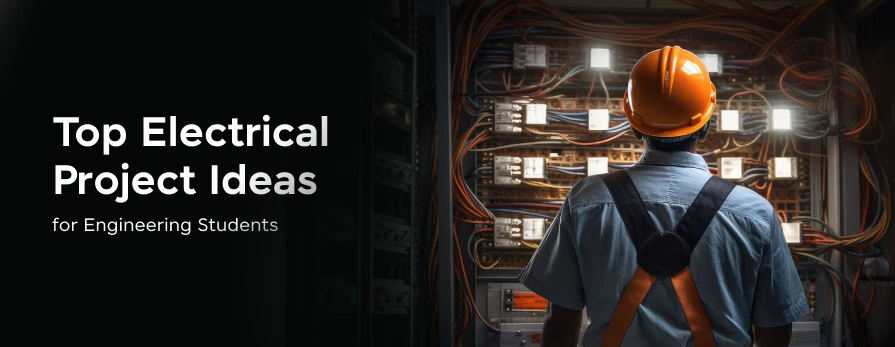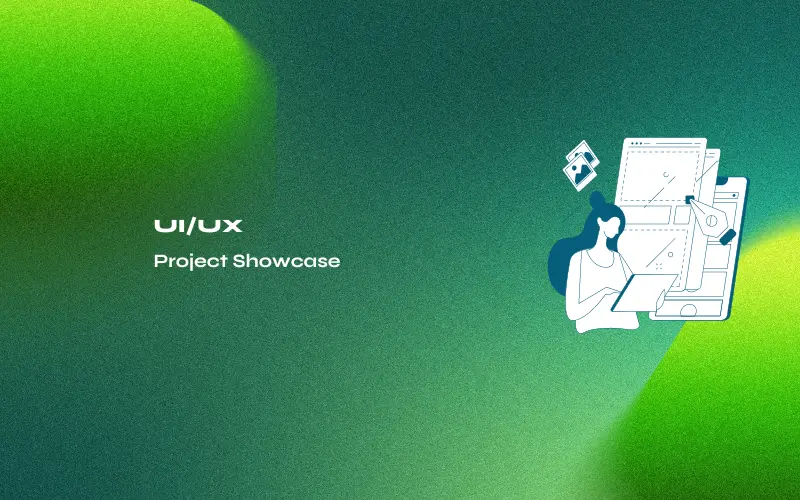
Top 15 Beginner-Friendly Data Science Project with Source Code
Apr 28, 2025 5 Min Read 4254 Views
(Last Updated)
Are you ready to level up your practical skills in data science? Building real-world applications is the best way to learn and advance in a new skill. Creating a complete data science project not only enhances your technical skills but also boosts your confidence and increases your chances of landing a highly rewarding career.
In this blog, we will look into the top 15 beginner-friendly data science projects. This blog lists project ideas from basic to advanced levels. Plus, we are not just giving you the ideas; we will also provide you with source code for each project to help you get started quickly. So, let’s dive into these projects!
Table of contents
- What is Data Science?
- Top 15 Beginner-Friendly Data Science Project Ideas
- Web Scraping Movie Data from IMDB
- Simple Stock Price Tracker
- Weather Data Dashboard
- EDA COVID-19 Data
- Credit Risk Analysis
- Movie Recommendation System
- Flight Price Prediction
- Fake News Detection
- Building ChatBots
- Credit Card Fraud Detection
- Image Classification with CNNs
- Classifying Breast Cancer
- Recognizing Speech Emotions
- Social Media Trend Analysis
- Performing Sentiment Analysis on Tweets (BERT)
- Conclusion
- FAQs
- How do I find data science project ideas?
- How do you showcase a data science portfolio?
- What are the 10 main components of a data science project?
- Which data science project is best for placement?
- How do I start my first data science project?
What is Data Science?
By the name itself, we can say that it is a science about data. Data Science is the study of data to extract meaningful information and insights. Data science is used to provide a data-driven solution to real-world problems. It includes maths, statistics, machine learning(ML), and artificial intelligence(AI).
Top 15 Beginner-Friendly Data Science Project Ideas
This section lists beginner-friendly data science project ideas from difficulty levels ranging from basic to advanced. We will present each project idea with an estimated time taken to build it, its difficulty level, tech stack to use, deployment guidance, learning outcome, and Python version. So, let’s get started!
1. Web Scraping Movie Data from IMDB
In this project, you will scrape movie data such as title, genre, rating, year, director, and cast from the IMDB dataset using BeautifulSoup. Once the information is extracted, it can be stored in a structured dataset for further processing. It is the best way to understand web scraping and build your mini dataset.
Time Taken: 2 hours
Difficulty Level: Easy
Tech Stack: Python, BeautifulSoup, pandas
Python Version: >= 3.8
Learning Outcome: Scrape websites, parse HTML, and structure extracted data
Deployment: NA
Source Code: GitHub
2. Simple Stock Price Tracker
In this project, you will create a simple tool to track stock prices using real-time data from Yahoo Finance. It is used to monitor stock prices by pulling a live dataset. You will visualize price trends and learn to automate data collection using APIs.
Time Taken: 3 hours
Difficulty Level: Easy
Tech Stack: Python, yfinance, matplotlib
Python Version: >= 3.8
Learning Outcome: Learn to fetch financial data and visualize stock trends
Deployment: Streamlit (optional)
Source Code: GitHub
3. Weather Data Dashboard
Build a dashboard that displays real-time weather data for any city using OpenWeatherMap’s API. It pulls key details such as temperature, weather conditions, humidity, and wind speed from the API and presents them in an easy-to-read format. It is a great project to showcase your ability to connect frontend and backend logic.
Time Taken: 3 hours
Difficulty Level: Easy
Tech Stack: Python, OpenWeatherMap API, Streamlit
Python Version: >= 3.8
Learning Outcome: Usage of APIs, JSON data, and interactive dashboards
Deployment: Streamlit or Heroku
Source Code: GitHub
4. EDA COVID-19 Data
This project dives into pandemic data and analyzes how COVID-19 spread across different regions. Working with real-world datasets, it highlights key patterns and differences in the virus’s spread on both global and regional levels. This will visualize datasets, generate insight,s and spot global and regional trends through graphs and plots.
Time Taken: 4 hours
Difficulty Level: Easy
Tech Stack: Python, pandas, matplotlib, seaborn
Python Version: >= 3.8
Learning Outcome: Data cleaning, aggregation, and visualization
Deployment: Not required
Source Code: GitHub
5. Credit Risk Analysis
This project uses financial history and customer demographics to predict credit risk using basic machine learning models such as decision trees. The machine learning model aims to identify patterns that signal potential defaults. The main focus of this project is to turn the raw data into actionable insights.
Time Taken: 5 hours
Difficulty Level: Easy
Tech Stack: Python, pandas, scikit-learn
Python Version: >= 3.8
Learning Outcome: Learn to analyze financial data and build a basic classification model
Deployment: Streamlit
Source Code: GitHub
6. Movie Recommendation System
This is a recommendation system built using Python that leverages the power of the pandas library. It suggests movies based on user preferences by analyzing similarities between films. It is a great project for understanding data-driven solutions.
Time Taken: 6 hours
Difficulty Level: Intermediate
Tech Stack: Python, pandas, scikit-learn
Python Version: >= 3.8
Learning Outcome: Understanding of recommendation algorithms and similarity metrics
Deployment: Streamlit or Flask
Source Code: GitHub
Are you looking for a perfect roadmap and guide to start your data science career? Worry not, enroll in Guvi’s FREE E-book on Master the Art of Data Science – A Complete Guide. This is a great way to start your career.
7. Flight Price Prediction
Build a predictive model to predict flight ticket price using an airline dataset based on factors such as travel date, flight duration, number of stops, and other relevant information. The goal is to uncover how these columns influence the price of a flight ticket.
Time Taken: 6 hours
Difficulty Level: Intermediate
Tech Stack: Python, pandas, scikit-learn, XGBoost
Python Version: >= 3.6
Learning Outcome: Deep understanding of regression models and feature extraction
Deployment: Heroku
Source Code: GitHub
8. Fake News Detection
This project’s detection system trains a model to distinguish between real and fake news articles by using TF-IDF to break down the content and then applies Naive Bayes or Logistic Regression to make predictions. This highlights how machine learning can be used to tackle misinformation by recognizing patterns in language and writing styles.
Time Taken: 7 hours
Difficulty Level: Intermediate
Tech Stack: Python, scikit-learn, TF-IDF, NLP
Python Version: >= 3.6
Learning Outcome: Master NLP techniques and build a text classifier
Deployment: Heroku (optional)
Source Code: GitHub
9. Building ChatBots
This project involves designing a chatbot to answer user queries and hold basic conversations. This is a real-time chatbot used to provide service to customers by addressing common queries and offering assistance in real time. By incorporating natural language processing techniques, it aims to create smooth and efficient interactions.
Time Taken: 8 hours
Difficulty Level: Intermediate
Tech Stack: Python, NLTK/Rasa, Flask
Python Version: >= 3.8
Learning Outcome: Building a conversational AI chatbot
Deployment: Webhook
Source Code: GitHub
10. Credit Card Fraud Detection
This project was used to detect fraud in transactional datasets using anomaly detection techniques. This helps in identifying suspicious activity in financial data. By analyzing patterns and identifying outliers, the system can flag suspicious transactions.
Time Taken: 8 hours
Difficulty Level: Intermediate
Tech Stack: Python, pandas, scikit-learn, SMOTE
Python Version: >= 3.8
Learning Outcome: To detect rare events accurately using imbalanced datasets
Deployment: Optional
Source Code: GitHub
11. Image Classification with CNNs
This project will classify images like cats and dogs using convolutional neural networks (CNN). It helps in understanding image processing, feature maps, and neural network architectures. By applying CNNs, this aims to gain a deeper understanding of how machines can recognize visual data.
Time Taken: 10 hours
Difficulty Level: Advanced
Tech Stack: Python, Tensorflow/Keras, OpenCV
Python Version: >= 3.8
Learning Outcome: CNN models and Image processing
Deployment: Streamlit (Optional)
Source Code: GitHub
12. Classifying Breast Cancer
This involves building a classifier model to detect malignant tumors in the breast from diagnostic data. By analysing extracted features from medical records, the models aim to accurately distinguish between benign and malignant cases. It is a helpful project and a practical application in the healthcare domain.
Time Taken: 9 hours
Difficulty Level: Advanced
Tech Stack: Python, scikit-learn, pandas
Python Version: >= 3.8
Learning Outcome: Usage of classification model in the healthcare domain
Deployment: Streamlit (optional)
Source Code: GitHub
13. Recognizing Speech Emotions
This project classifies emotional states such as happy, sad, or angry from speech. It can be achieved with the help of extracting MFCC features and using deep learning to train the classification model.
Time Taken: 11 hours
Difficulty Level: Advanced
Tech Stack: Python, librosa, TensorFlow
Python Version: >= 3.8
Learning Outcome: Extraction of audio features from speech and building an emotion classifier
Deployment: Streamlit (optional)
Source Code: GitHub
14. Social Media Trend Analysis
This project uses any of the social media API (Instagram, Twitter, etc) to collect and analyze the tweets from trending topics, user sentiment, and engagement metrics. This project is great for applying data science to real-time social media data.
Time Taken: 9 hours
Difficulty Level: Advanced
Tech Stack: Python, Tweepy, pandas, matplotlib
Python Version: >= 3.6
Learning Outcome: Understanding social media APIs, hashtags, user activity, and engagement trends
Deployment: Streamlit (optional)
Source Code: GitHub
15. Performing Sentiment Analysis on Tweets (BERT)
In this project, NLP is used heavily to fine-tune a transformer model like BERT to classify tweet sentiments such as negative, positive, or neutral. By training the model on social media text, the goal is to capture subtle differences in tone and content, making it effective for real-time sentiment analysis.
Time Taken: 11 hours
Difficulty Level: Advanced
Tech Stack: Python, HuggingFace, Transformers, TensorFlow
Python Version: >= 3.8
Learning Outcome: Application of BERT and fine-tuning LLMs for classification tasks
Deployment: Streamlit or HuggingFace Space
Source Code: GitHub
If you want to learn the necessary skills required for a data science starting from scratch to advance in a single course from India’s top Industry Instructors, consider enrolling in GUVI’s Zen class course “Become a Data Science Course with IIT-M Pravartak” that not only teaches you everything about data science, but also provides you with hands-on project experience and industry-grade certificate!
Conclusion
In conclusion, building projects that solve real-world problems is the key to mastering a skill. Similarly, creating various projects in Python and its libraries with different difficulty levels is the way to become an expert in data science. With the help of the top 15 data science projects listed above, you will master data analysis, exploratory data analysis, data visualization, machine learning models, LLMs, including deployment and version control systems.
FAQs
To discover data science project ideas, consider your interests or industry preferences. In the article above, we have covered everything that you might need to know, so do go through it. Also, browse online platforms like Kaggle, DataCamp, and GitHub for inspiration. Analyze real-world problems and brainstorm how data could solve them. Explore datasets on platforms like the UCI Machine Learning Repository. Collaborate with others and leverage current trends for innovative ideas.
To showcase a data science portfolio, compile diverse projects that highlight your skills. Include a variety of datasets, detailing the problem, methodology, and tools used. Provide clear explanations, visualizations, and code samples. Demonstrate real-world impact and innovation, making your portfolio an impressive reflection of your expertise.
A data science project comprises ten key components:
1. Problem Definition: Clearly define the problem and the goals of the project.
2. Data Collection: Gather relevant data from various sources.
3. Data Cleaning: Preprocess and clean the data to remove errors and inconsistencies.
4. Exploratory Data Analysis (EDA): Analyze data to derive insights and patterns.
5. Feature Engineering: Select and create relevant features for modeling.
6. Model Selection: Choose appropriate algorithms and models for analysis.
7. Model Training: Train the chosen model using the prepared data.
8. Model Evaluation: Assess the model’s performance using suitable metrics.
9. Model Interpretation: Understand the model’s behavior and results.
10. Deployment: Implement the model in real-world applications.
These components ensure a comprehensive and structured approach to a data science project, facilitating effective problem-solving and decision-making.
The ideal data science project for placement would involve real-world data, encompass various stages of the data science pipeline, and exhibit strong problem-solving, statistical analysis, and machine learning skills. A project solving a pressing industry problem with clear methodologies, in-depth analysis, and effective communication of results would be highly impressive to potential employers. We have some excellent examples that cover most of these areas in-depth in the article above.
To commence your inaugural data science project, begin by selecting a clear and well-defined problem. Acquire and comprehend the necessary data, ensuring its accuracy and relevance. Then, preprocess the data by cleaning, transforming, and handling missing values. Choose appropriate tools and libraries, craft exploratory data analysis, select suitable algorithms, and iterate through testing and refining. Finally, communicate your results effectively. For more help, refer to the detailed guide above!





















![Top 10 React Native Project Ideas [With Source Code] 2 React Native Project Ideas](https://www.guvi.in/blog/wp-content/uploads/2024/10/React_Project_Ideas.png)
![9 Compelling Project Ideas for Frontend Development [With Source Code] 3 Feature image - Comprehensive List of Project Ideas for Frontend Development](https://www.guvi.in/blog/wp-content/uploads/2024/02/Project-Ideas-for-Frontend-Development.webp)
![Top Full Stack Web Developer Coding Projects in 2025 [With Source Code] 4 Full Stack Web Developer Coding Projects](https://www.guvi.in/blog/wp-content/uploads/2021/10/The-Good-Life-GoDaddy-Store-Image-10-600x250.jpg)







Did you enjoy this article?